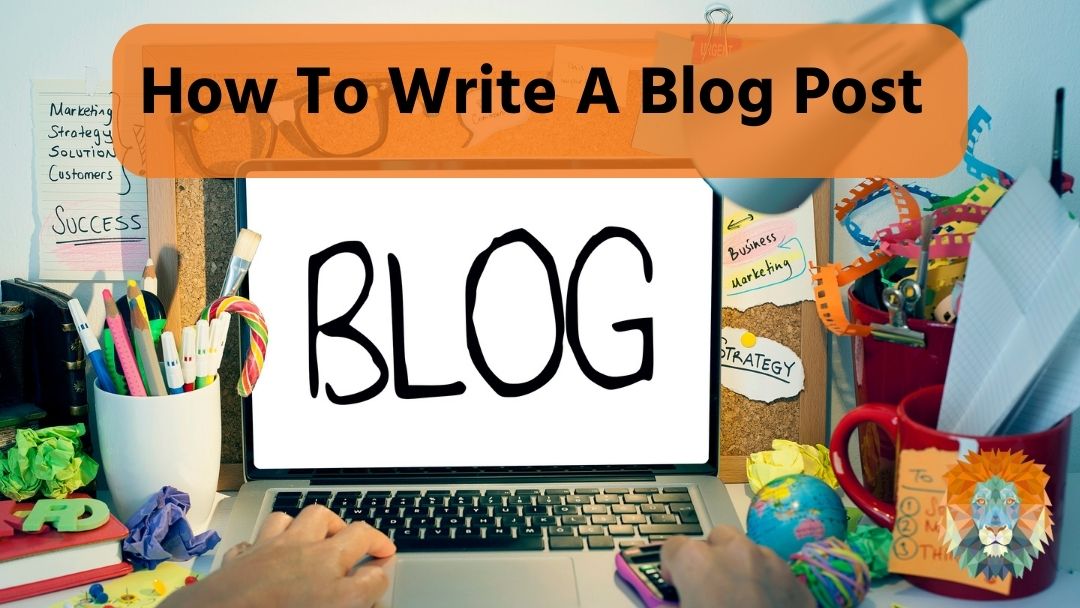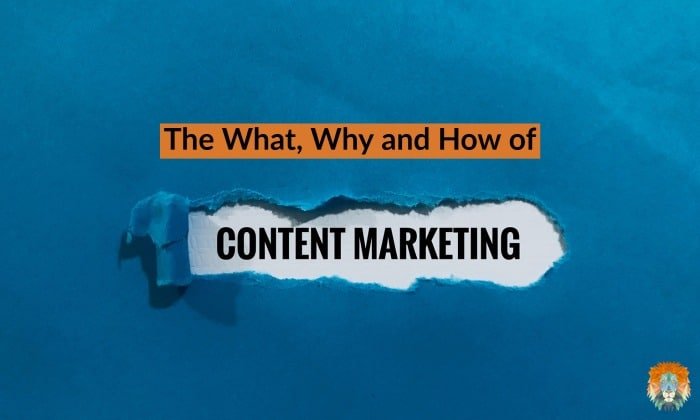In a world where content is king online, blog posts are one of the most powerful content marketing tools you could ask for. The problem is that many people don’t know what they are or how to write them. You might read them fairly regularly, but when you sit down to create one yourself you don’t know where to start. Don’t worry though, we’re here to help you fix that.
What Is A Blog Post?
First things first, what is a blog post anyway? Well, you’re reading one right now! It’s simply an article hosted on your website. They evolved from the online diary and journal sites of the mid-90s, when they were mainly used by people to share information about their lives, their thoughts and how things were going. As time went on, tools were created to make running your own blog website easier, and eventually to help monetise blogs run by individuals.
Around the early 2000s some businesses started to use blogs to market their work, and though it took a long time to catch on, it’s now one of the main pillars of content marketing for many businesses.
Business blog posts focus on one particular issue, service or question and provide information in a friendly and less sales-ey way than, say, a landing page. They are usually written in a conversational tone, and many have a comment section where users can respond to the article if they so choose.
A single blog post can range from 600 words to over 2,000 and often contain other media like images, ideas or infographics to support the points being made. Once written they are posted on your website, and can be used to share on social media, drive traffic to your website, improve your SEO rankings or just share information with your clients and prospects.
What Makes A Good Blog Post?
This is a big one, because while everyone can write, not everyone can write well, especially when it comes to blog posts. The good news is, if you aren’t naturally a great blogger you can learn – it’s a skill, and you get better at it the more you do it. And since you want your blogs to be successful, you need to know what makes a good blog post.
The first thing your blog needs to be is educational and preferably interesting. Blogs are used by 77% of the world’s internet users to learn and understand a subject, so this is a must. Each blog you write should answer a question, solve a challenge or bring some new information to the reader to keep them engaged to the very end.
If you’re unsure what those questions or challenges are, it’s time to do market research. Get out there and speak to your customers, find out what they want to know, what they struggle with, and the things they don’t want to ask because they feel like silly questions. If you have an FAQ page (or even just a list of things you get asked a lot), start there.
A great blog post will also include some action points. Things your readers can take away and do, to see how good your knowledge is and how much you can actually help them. This will not only reinforce your status as the knowledgeable person on this issue, but it will keep them coming back to your website and eventually convert them to a paying customer. For example, in the next section, we’re going to talk you through how to write your first blog post so that you can try it for yourself!
Writing Your First Blog Post
Ready to try your hand at writing your own blog post? Great! Just follow these steps:
Brainstorm topics
First, make yourself a list of topics you would like to cover. You don’t need specific titles yet – just a general idea of the subjects you’re going to talk about. Think about the services you offer and the issues you solve for clients. What questions are you asked regularly? What information do you always find yourself repeating? What are your customers concerned about? If you’re still not sure, use a tool like answerthepublic to find out what people are looking for online.
Choose your post type
Did you know there’s more than one type of blog post? Are you going to post a list? An informational article (like this one)? An interview with an expert? A ‘how to’ guide? A ‘what is’ post? Knowing what format your blog will take makes writing it much easier.
Choose your keywords
You want your blog to be found on Google, so you need to include some keywords. These are words or short phrases that are related to your blog content, and match what people will type into Google when looking for that kind of information. There are a lot of different tools out there to help you find out what those keywords are, but we recommend either SEM Rush or the Google Keyword Planner.
Write a compelling title
Now you need a title. You need something that’s going to draw people in and make them want to read more, but without being too ‘clickbaity’ about it, as this puts people off. This means describing what is actually in the article in an interesting way. You should also include one of your keywords in the title too!
Create an outline
Rather than jumping right in, we recommend taking a bit of time to outline what your post will look like. This means breaking the topic into chunks, giving each one a heading (this is important later). This gives you a structure to work with and means you know vaguely what you’re going to talk about before you sit and write it.
Write your post
Speaking of which, it’s time to do just that! Thanks to your outline this should now be pretty straightforward. We often find writing the bulk of your post first can be helpful, and leaving the introduction and conclusion to the end. That way if you wander off topic you can adjust your intro & conclusion to match it. Don’t worry if you struggle to find your flow right away, just focus on getting the information on the page for now. Remember to include your keywords in the post as well. You should be aiming for about 1-2% keyword density, which means one of your keywords should be included in every 100 words you write.
Add calls to action
Once your post is finished, go through and add one or two calls to action. This could be something as simple as ‘contact us today’, through to asking people to download something from you, sign up to something or follow you on social media. Whatever you want people to do after reading your post, be open about asking them to do it!
Proofread
Walk away from the blog for a while. We mean it. Give yourself at least a day not looking at or thinking about the blog. When you come back to it, you will have fresh eyes and it will be easier to spot mistakes you may have made. Credibility online is very important, so you want to make sure there are no spelling or grammar errors, and everything makes sense. If you types the first draft, print it off and proofread it on paper – you’d be amazed at how much more you spot!
Upload
Once you’re happy that your blog is done, it’s time to upload it! This will usually be to your own website, so log in, hit ‘add blog’ and follow the steps on your platform to put the text in the right places. Don’t hit publish yet though!
Add images
Images are almost as important as words to both Google and your readers, so make sure you include some. You’ll need a header image (that goes at the top of the blog) at least, and ideally a few images to go in the post to break up the text. If you have your own images that’s best, but you can find great images on free stock image sites like Unsplash too.
Optimise for SEO
This is where all the technical bits come in. Each blog post on your website should have a meta description and unique URL, both of which should include your keywords. Your images should all have alt text including that keyword too, and any links out to other pages or websites in the text should be added in the right place (known as ‘anchor text’). You should also make sure your titles and subtitles are tagged as headings in the software, and that everything looks good on desktop and mobile.
Hit publish
Once you’ve done all of that, it’s time to hit publish! Once your blog is live your job isn’t over. Now you need to promote it online to drive traffic to your site. This means sharing it on social media, sending it out in your newsletters, talking to people about it and maybe even investing in paid advertising to get it out there.
It might sound like a lot, but getting your ROAR out there in the form of blog posts is one of the best ways to make sure your brand voice is heard far and wide. Blogs are a key part of content marketing strategy for modern businesses, so it’s worth spending time writing them. And if you don’t have the time, or really aren’t happy with your own efforts, then there are people out there who can help. Like us! At Lion Spirit Media we handle all elements of content marketing, including creating and promoting blog posts for your business. If you would like to know more, just get in touch with the team today.





0 Comments